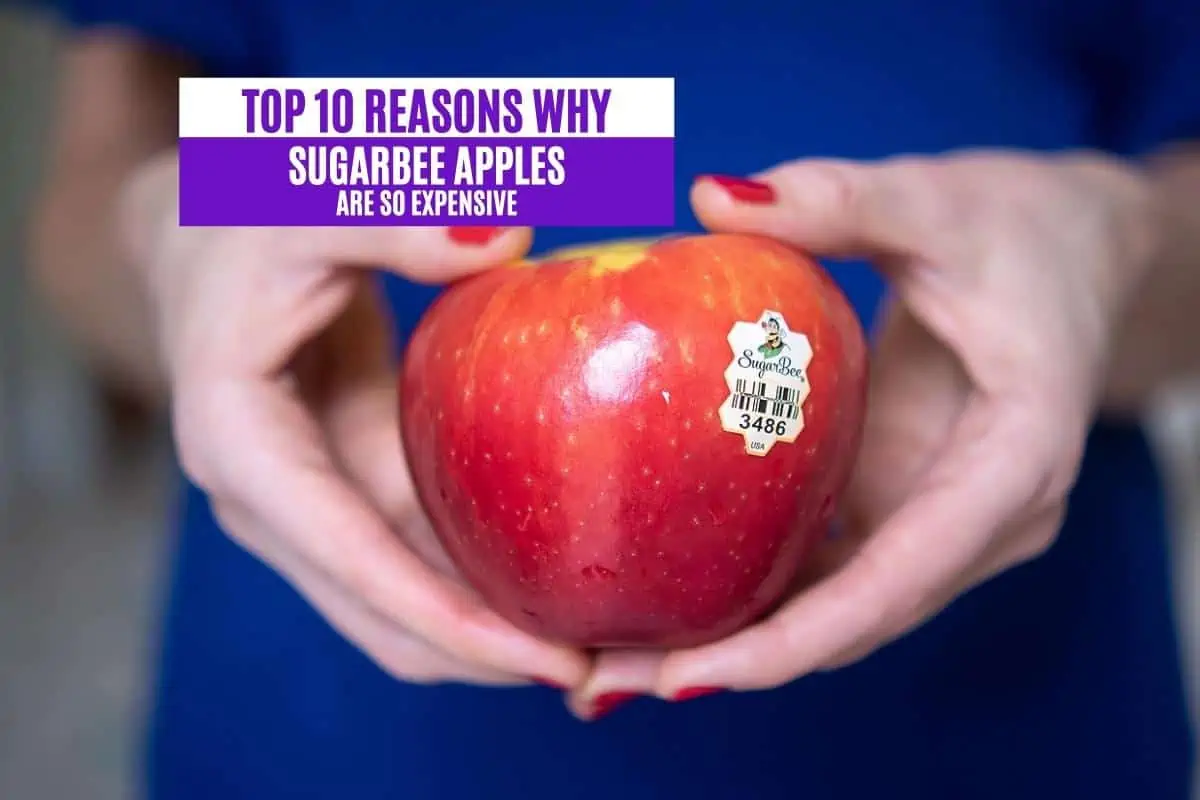As the old adage goes, an apple a day keeps the doctor away! But adhering to this sage advice can be tricky, as some apples are quite costly! SugarBee apples are some of the priciest of the bunch, but why are these apples so expensive?
SugarBee apples are more expensive than other varieties because they’re grown in one location and are patented. This means that only a handful of growers are permitted to produce SugarBee apples, so the supply is low. But due to advertising, demand is high, resulting in an elevated price.
This guide will answer the question, “Why are SugarBee apples so expensive?” After exploring the reasons for this apple’s high price tag, you might feel compelled to buy some for yourself!
Here Are the Top 10 Reasons Why SugarBee Apples Are Expensive
- SugarBee apples are only grown in Washington State
- These apples are patented
- SugarBee apples are incredibly sweet
- Organic SugarBee apples cost more
- SugarBee apples have a mysterious origin
- Growing these apples can be an expensive process
- Declining honey bee populations make pollination challenging
- Apple trees take years to produce fruit
- SugarBee apples are packed with nutrients
- These apples taste best during the spring
10. These Apples Taste Best During the Spring
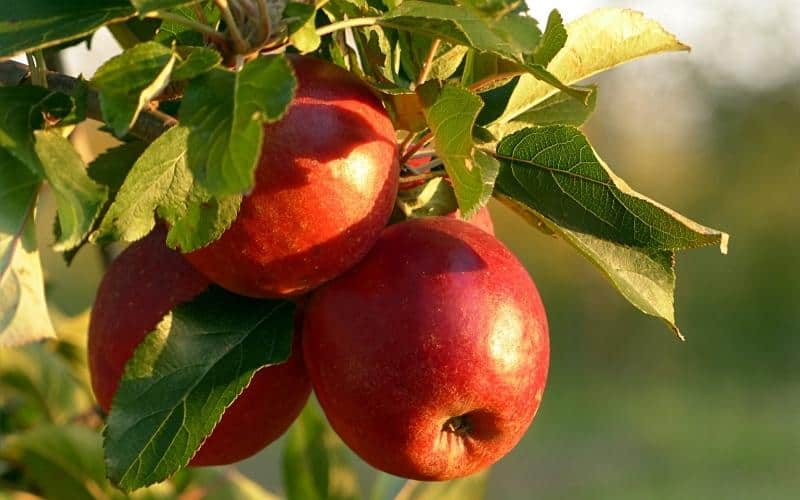
Every fruit and vegetable has its season. For example, many fruiting plants need to experience chill hours (long spells of cold weather) to produce blooms in the spring season.
Additionally, SugarBee apples only bloom in late winter and early spring. While preservation techniques can ensure that SugarBee apples are available throughout the year, the best-tasting SugarBee apples are only available in spring and summer.
Because these apples taste best during specific seasons, consumer demand during spring and summer is much higher than during other seasons. This higher demand makes for higher prices.
But prices remain consistent throughout the year. After all, the supply of SugarBee apples declines after the spring harvest. So, while demand typically falls slightly toward the latter half of the year, supply also decreases.
This mirroring trend ensures that SugarBee apples remain consistently expensive, no matter the season. And those who enjoy the sweet taste of SugarBee apples are also more willing to buy them all year long, thanks to their high nutrient content.
9. SugarBee Apples Are Packed With Nutrients
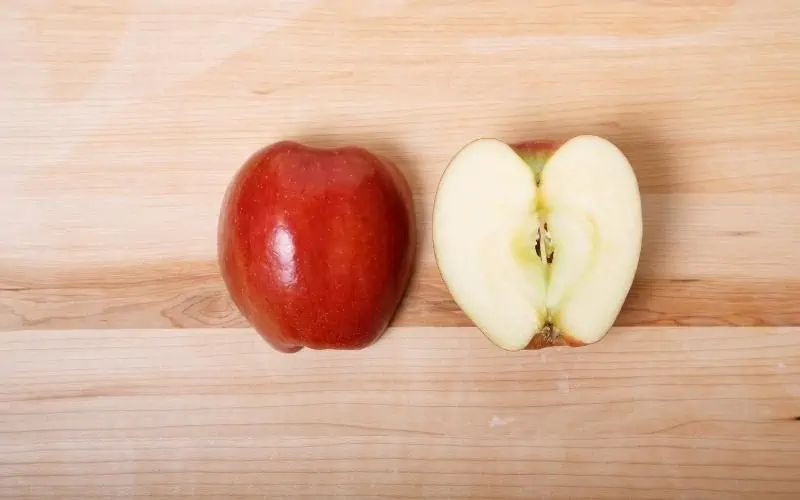
The average apple is an excellent source of dietary fiber and antioxidants. But some varieties are more nutritious than others. SugarBee apples offer a unique balance of natural sugars (hence their sweet taste) and wholesome nutrients.
A single organic SugarBee apple provides up to 16% of your recommended daily intake (RDI) of fiber. After enjoying one of these apples, you’ll have consumed up to 10% of your RDI of vitamin A!
This fruit is naturally cholesterol-free, making it a heart-healthy alternative to meat snacks or oily potato chips. SugarBee apples are also an excellent source of:
- Vitamin K
- Vitamin E
- Vitamin C
- Vitamin B6
- Thiamin
- Riboflavin
- Potassium
- Phosphorus
- Magnesium
When you eat an organic SugarBee apple, you’ll also enjoy a slight boost of iron, which is incredibly important for anemic individuals.
The exceptional variety of nutrients in each SugarBee apple makes it a go-to choice for those hoping to eat healthier while still enjoying a sweet snack. Consumers are willing to pay more for delicious snacks packed with nutrients, forcing the price of SugarBee apples ever higher.
8. Apple Trees Take Years to Produce Fruit
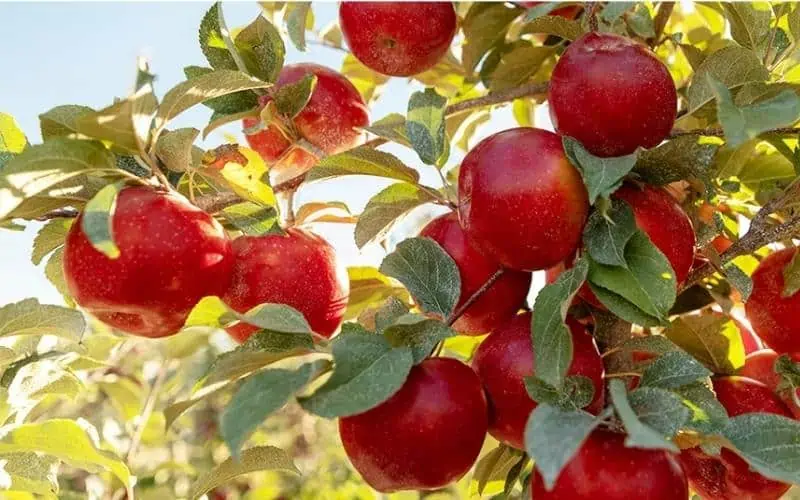
Like many of the world’s most expensive nuts, some apple varieties are pricey because apple trees take years to start producing fruit. Depending on the particular species, an apple tree might not begin to make fruit until it’s at least five years old.
And when these first little fruits begin to form, they might not meet quality standards. A tree’s first few years of fruit production are often marred by low harvest counts and lackluster fruit quality.
Consequently, a SugarBee apple tree could spend the first decade of its life failing to earn profits. Moreover, pollination challenges can extend this zero-profit period, as SugarBee apple trees rely on native pollinators to produce fruit.
7. Declining Honey Bee Populations Make Pollination Challenging
Pollinating insects are a crucial part of any ecosystem. They spread pollen from one plant to another, allowing fruit-bearing plants to reproduce. Without this reproduction, fruit plants wouldn’t be able to produce fruits!
But, sadly, many pollinators are experiencing rapid population declines. Honey bees, the primary pollinator for SugarBee apples, are some of the most affected pollinators.
Between 2020 and 2021, the United States bee population declined by almost half. And with fewer bees zooming around pollinating plants, many apple trees might fail to pollinate one another. The final result is a significantly reduced apple output.
Unless the honey bee population bounces back, the price of fruit is likely going to increase over time. This general price increase affects SugarBee apples more than other fruits, as SugarBee apple trees rely almost exclusively on honey bee populations to reproduce.
However, pollination concerns are only one of the costly issues facing SugarBee apple growers. Raising and maintaining these apple trees is an expensive process, which only adds to their initial priceyness.
6. Growing These Apples Can Be an Expensive Process
Growing an apple tree isn’t as simple as watering it and making sure it has plenty of sunlight. For example, orchard owners need to space their trees precisely to ensure they have plenty of room to grow.
Growers also need to inspect trees for signs of pests or blight and keep soil moisture at just the right level. Heavy rains, droughts, and invasive insects can spell doom for SugarBee apple trees.
Besides, as we mentioned earlier, apple trees often take years to produce fruit. Consequently, growers invest tons of money each year into immature trees that aren’t profitable. These sunk costs mean that fruits from mature trees are pricier.
It’s also impossible to recreate SugarBee apples from other varieties. That’s because the SugarBee apple’s origin is shrouded in mystery, which is another aspect that increases the prices of these apples.
5. SugarBee Apples Have a Mysterious Origin
The more enigmatic an item is, the more attractive it is to consumers. Fortunately for SugarBee apple growers, the SugarBee apple has an incredibly mysterious origin story.
Here’s the thing—apple trees need pollen from other apple trees to produce fruit. In addition, many varieties need pollen from other species of apple trees, which complicates matters.
After all, when you combine the pollen of one apple type with another, you often end up with a hybrid variety.
But this pollination process is entirely responsible for the birth of the SugarBee apple. The only trouble is that no one is sure which tree’s pollen made the first SugarBee apple.
The base variety is Honeycrisp, but the added pollen responsible for making the SugarBee apple uniquely firm and sweet is a mystery. So far, only the bees (the insects that transport pollen among apple trees) know the secret behind the SugarBee apple’s creation.
This enigmatic origin makes the SugarBee apple a little more desirable to apple lovers worldwide. And this increased demand naturally increases SugarBee apple prices. However, some SugarBee apples are pricier than others.
4. Organic SugarBee Apples Cost More
If you’ve ever compared prices at your local grocery store’s produce section, you’ve likely noticed that organic produce is always more expensive than non-organic options. That’s because it costs more to grow organic produce.
There are dozens of things that can go wrong when growing fruits and vegetables. Natural pests, molds, weeds, and poor weather can kill a crop in days or just a few minutes. For that reason, many farmers use heavy-duty pesticides and fertilizers to ensure their crops remain healthy and pest-free.
But keeping organic produce healthy is challenging. Farmers often need to invest more time into checking the health of their crops and more land to grow crops. After all, when crops are placed close together, there’s less airflow to help prevent fungal growth.
Organic SugarBee apples require more labor than non-organic versions, resulting in a higher price. However, consumers are often more than happy to pay this heftier cost, as SugarBee apples are often described as the sweetest apples grown in the United States.
3. SugarBee Apples Are Incredibly Sweet
Food items that tickle the taste buds are always costlier than foods with bland flavor profiles. That’s why some of the world’s most expensive chocolates command incredible prices.
SugarBee apples are some of the sweetest apples available, making them a natural choice among consumers looking to enjoy a burst of natural sugars.
Thanks to their high sugar content, these apples are also an excellent choice for desserts. Home cooks who enjoy making apple pie, apple tarts, and apple ice cream may prefer SugarBee apples over other varieties.
SugarBee apples also have a firmer texture than other types of apples. This texture ensures that each bite is crunchy, making for a pleasant eating experience. You’ll understand how crucial firmness is if you’ve ever bitten into a soft, slightly-rotten apple.
Still, a delicious flavor and attractive interior texture aren’t the only reasons SugarBee apples fetch high prices. A patent protects these apples, restricting the number of growers allowed to produce SugarBee apples.
2. These Apples Are Patented
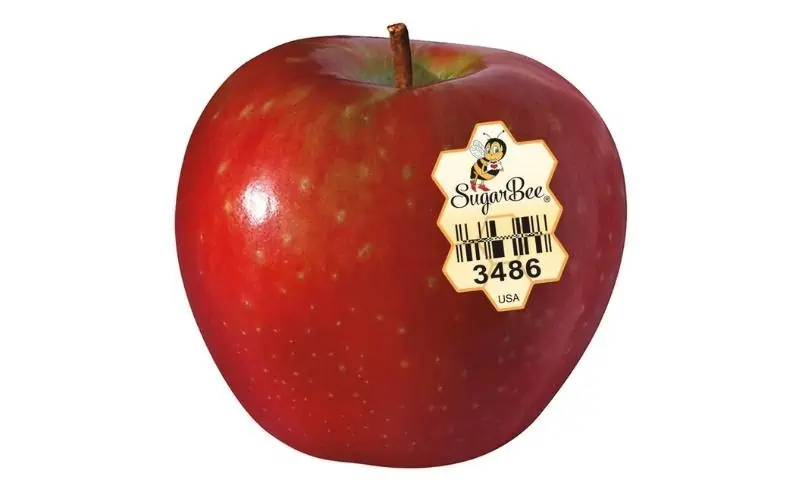
Companies can’t legally reproduce products protected by patents that they don’t own. This protection allows the patent owner to maintain full ownership of a product, reducing competition. And when there’s less competition, there’s a greater chance of earning a profit.
SugarBee apples are patent-protected. So, if you decided to save the seeds from a SugarBee apple and grow an apple tree in your yard, you’d be breaking the law!
You could only grow your own SugarBee tree by receiving permission from the patent owner, Chuck Nystrom. But considering the economic success of these apples, it’s doubtful that Mr. Nystrom will let go of the SugarBee patent anytime soon.
Additionally, Mr. Nystrom sold the rights to grow SugarBee apples to only a few orchards in Washington State. So, these apples are protected by patent regulations, and the supply is carefully controlled.
As the law of supply and demand decrees, any good with a supply that’s lower than its demand will fetch higher-than-average prices.
1. SugarBee Apples Are Only Grown in Washington State
A limited supply will almost always result in a higher price. For example, Alaskan king crab harvesting is strictly controlled, keeping the supply low and making this seafood extremely expensive!
When it comes to SugarBee apples, supply is always low. That’s because orchard owners only grow these apples in one place: the mountainous valleys of Washington State.
While SugarBee orchards aren’t confined to only one county (they’re grown in Okanogan, Douglas, and Chelan counties), you won’t find them outside of Washington. As a result, buyers living in other states, especially those along the Eastcoast, tend to pay higher prices for these sugary fruits.
Supply is limited, as only a few orchards are approved to grow these apples. And when you add transport costs to the mix, you get a higher-than-average product price.
But, of course, if you’re willing to make the drive (or take a plane) to Chelan or Okanogan county, you might be able to score a sweet deal on SugarBee apples! Still, orchards don’t typically sell directly to consumers, so purchasing SugarBee apples from your local grocery store might be best.
How Much Do SugarBee Apples Cost?
The prices for SugarBee apples vary depending on the time of the year, your location, the number of apples, and whether you’re buying organic apples. But a pound of SugarBee apples tends to retail for between $3 and $5.
Compare this to red delicious apples, which have an average price of about $1.38 per pound. Still, Honeycrisp apples, which are very similar to SugarBee apples, have an average price-per-pound of $4.50, making them nearly as pricey as SugarBee apples.
Why Are SugarBee Apples So Expensive?
So, why are sugar bee apples so expensive? The primary reasons behind this apple’s high price tag include limited growing locations and a holding patent.
Essentially, only a handful of growers can produce SugarBee apples, and they all live in Washington State! This exclusivity makes the supply of SugarBee apples incredibly limited, increasing the final cost of these sweet fruits.
Are you curious to learn more about the world’s most expensive food and drink items? Read these related articles now!

